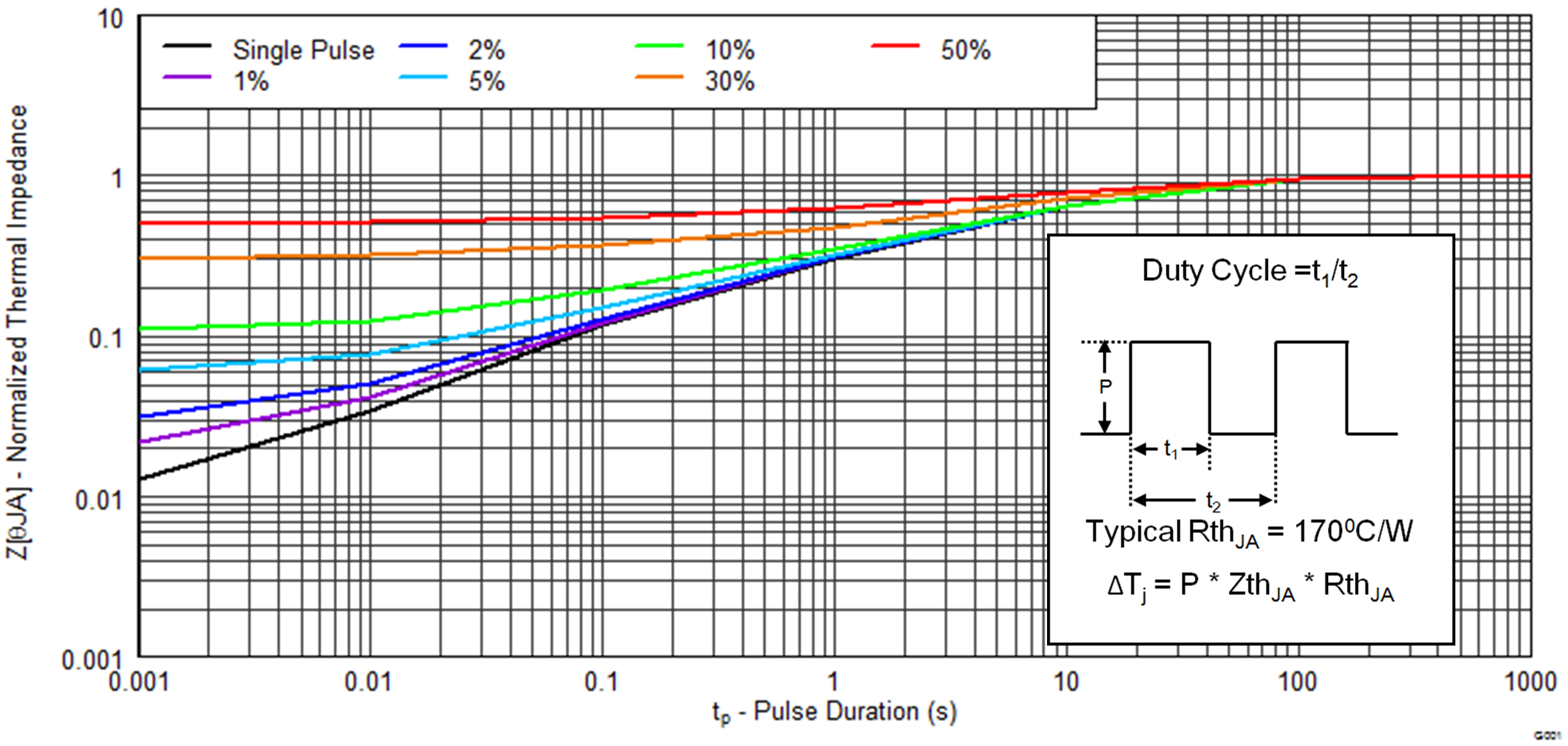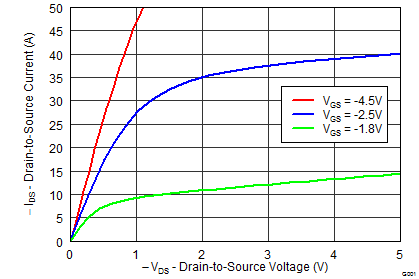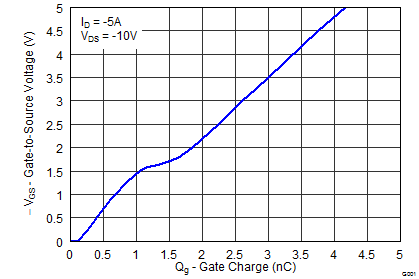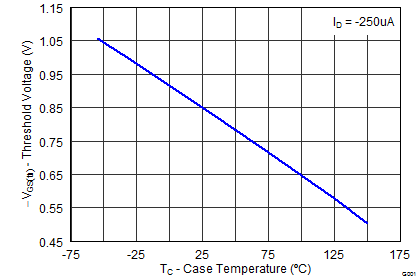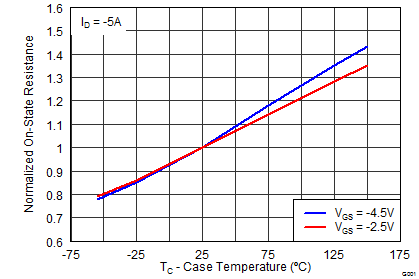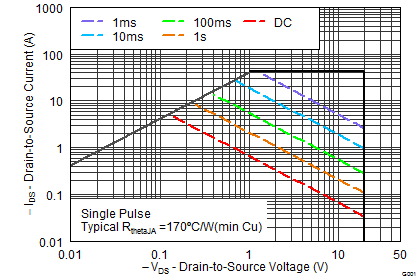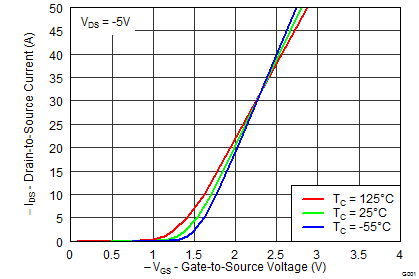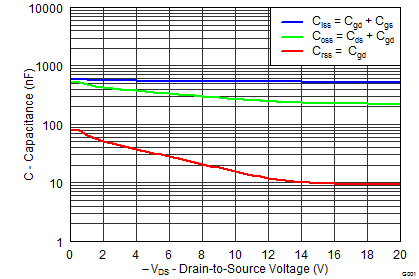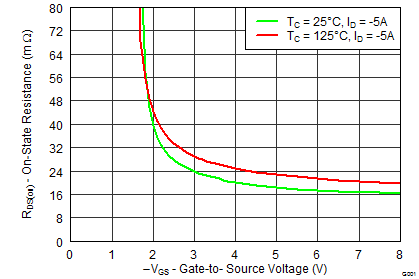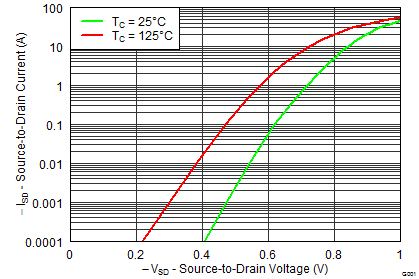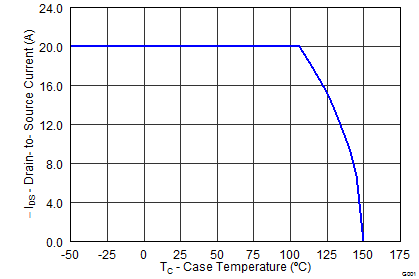SLPS459A January 2014 – June 2014 CSD25310Q2
PRODUCTION DATA.
- 1Features
- 2Applications
- 3Description
- 4Revision History
- 5Specifications
- 6Device and Documentation Support
- 7Mechanical, Packaging, and Orderable Information
Package Options
Refer to the PDF data sheet for device specific package drawings
Mechanical Data (Package|Pins)
- DQK|6
Thermal pad, mechanical data (Package|Pins)
Orderable Information
5 Specifications
5.1 Electrical Characteristics
TA = 25°C, unless otherwise specified| PARAMETER | TEST CONDITIONS | MIN | TYP | MAX | UNIT | ||
|---|---|---|---|---|---|---|---|
| STATIC CHARACTERISTICS | |||||||
| BVDSS | Drain-to-Source Voltage | VGS = 0 V, ID = –250 μA | –20 | V | |||
| IDSS | Drain-to-Source Leakage Current | VGS = 0 V, VDS = –16 V | –1 | μA | |||
| IGSS | Gate-to-Source Leakage Current | VDS = 0 V, VGS = –8 V | –100 | nA | |||
| VGS(th) | Gate-to-Source Threshold Voltage | VDS = VGS, IDS = –250 μA | –0.55 | –0.85 | –1.10 | V | |
| RDS(on) | Drain-to-Source On Resistance | VGS = –1.8 V, IDS = –5 A | 59.0 | 89.0 | mΩ | ||
| VGS = –2.5 V, IDS = –5 A | 27.0 | 32.5 | mΩ | ||||
| VGS = –4.5 V, IDS = –5 A | 19.9 | 23.9 | mΩ | ||||
| gfs | Transconductance | VDS = –16 V, IDS = –5 A | 34 | S | |||
| DYNAMIC CHARACTERISTICS | |||||||
| CISS | Input Capacitance | VGS = 0 V, VDS = –10 V, f = 1 MHz | 504 | 655 | pF | ||
| COSS | Output Capacitance | 281 | 365 | pF | |||
| CRSS | Reverse Transfer Capacitance | 16.7 | 21.7 | pF | |||
| Rg | Series Gate Resistance | 1.9 | Ω | ||||
| Qg | Gate Charge Total (–4.5 V) | VDS = –10 V, IDS = –5 A | 3.6 | 4.7 | nC | ||
| Qgd | Gate Charge Gate to Drain | 0.5 | nC | ||||
| Qgs | Gate Charge Gate to Source | 1.1 | nC | ||||
| Qg(th) | Gate Charge at Vth | 0.6 | nC | ||||
| QOSS | Output Charge | VDS = –10 V, VGS = 0 V | 5.0 | nC | |||
| td(on) | Turn On Delay Time | VDS = –10 V, VGS = –4.5 V, IDS = –5 A RG = 2 Ω |
8 | ns | |||
| tr | Rise Time | 15 | ns | ||||
| td(off) | Turn Off Delay Time | 15 | ns | ||||
| tf | Fall Time | 5 | ns | ||||
| DIODE CHARACTERISTICS | |||||||
| VSD | Diode Forward Voltage | IDS = –5 A, VGS = 0 V | –0.8 | –1.0 | V | ||
| Qrr | Reverse Recovery Charge | VDD = –10 V, IF = –5 A, di/dt = 200 A/μs | 9.2 | nC | |||
| trr | Reverse Recovery Time | 13 | ns | ||||
5.2 Thermal Information
(TA = 25°C unless otherwise stated)| THERMAL METRIC | MIN | TYP | MAX | UNIT | |
|---|---|---|---|---|---|
| RθJC | Thermal Resistance Junction to Case(1) | 4.5 | °C/W | ||
| RθJA | Thermal Resistance Junction to Ambient(1)(2) | 55 | |||
(1) RθJC is determined with the device mounted on a 1-inch2 (6.45-cm2), 2-oz. (0.071-mm thick) Cu pad on a 1.5-inch × 1.5-inch (3.81-cm × 3.81-cm), 0.06-inch (1.52-mm) thick FR4 PCB. RθJC is specified by design, whereas RθJA is determined by the user’s board design.
(2) Device mounted on FR4 material with 1-inch2 (6.45-cm2), 2-oz. (0.071-mm thick) Cu.
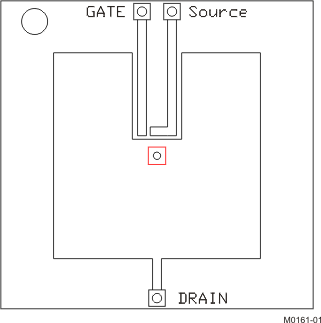 |
Max RθJA = 55 when mounted on 1 inch2 (6.45 cm2) of 2-oz. (0.071-mm thick) Cu. |
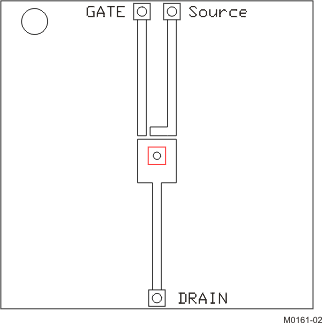 |
Max RθJA = 215 when mounted on minimum pad area of 2-oz. (0.071-mm thick) Cu. |
5.3 Typical MOSFET Characteristics
(TA = 25°C unless otherwise stated)